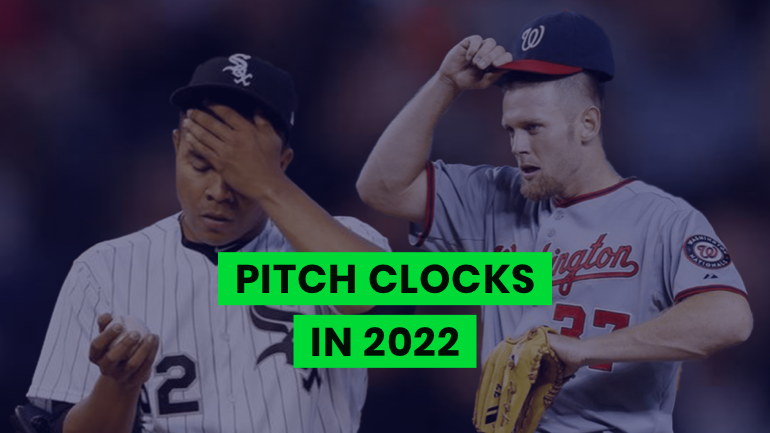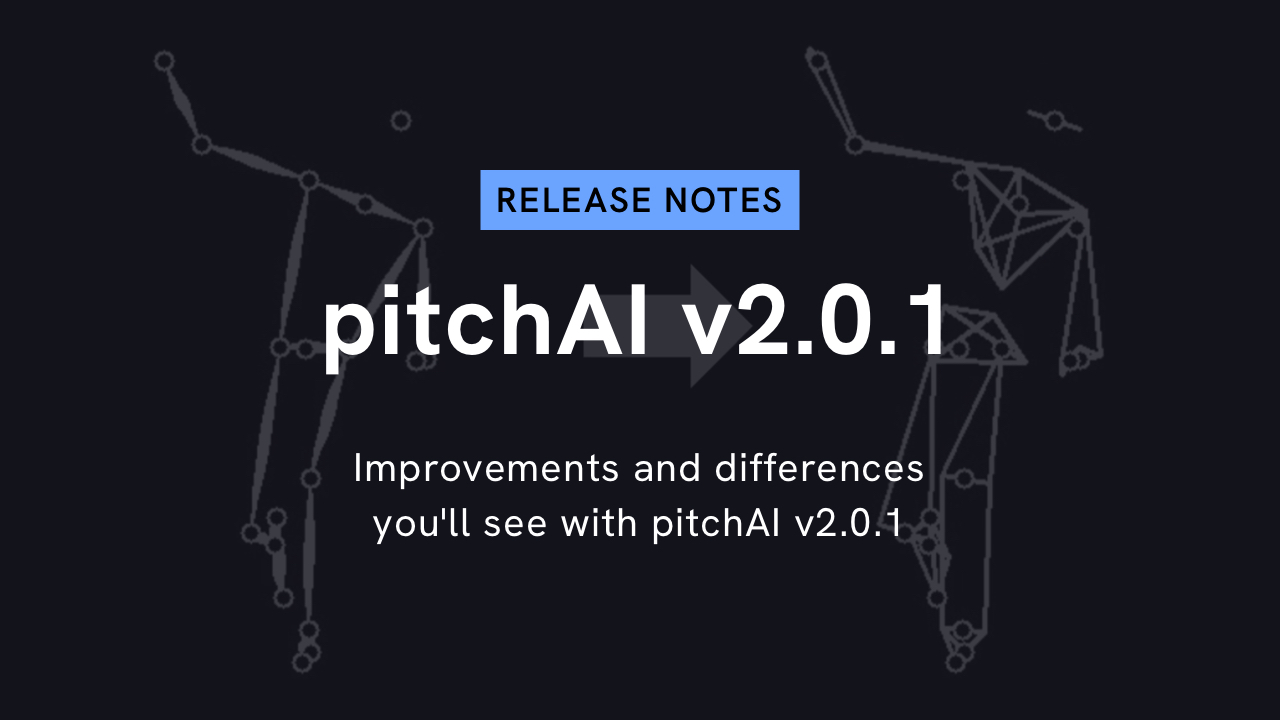I’m writing this article differently than my last one, because I don’t want to be accused of lacking nuance by other baseball writers. I mean, when you see convincing results – ones which are completely backed by just basic logic, I’d think you would probably be ok to just not go down that route, but, here we are. It’s 2022, we fight over what the truth is – and while we’re all just dying to get out to see a spring training game, most of us are refreshing Twitter to see how bad the CBA negotiations are going.
Last night, reports broke outlining acceptance of larger bases, and one of my research focal points (I had written something else here, but nuance), pitch clocks. The proposal outlined was there would be a 14 second pitch clock with no runners on base, and a 19 second pitch clock when there were runners on base. So, as pitchers toe the rubber – a large LED sign will stare them down beckoning 5….4….3…2….1 – with threat of a ball being called laid out before them. Nuance.
I’ve researched muscle fatigue for the better part of the past 12 years, earning a doctoral degree from McMaster University’s Kinesiology program for my work in the field. I’ve produced 12 peer reviewed publications in various academic journals – including the Journal of Physiology, Biological Psychology, The Journal of Electromyography and Kinesiology, Journal of Sports Sciences, etc, etc. And, while I hate the terminology around calling yourself one of these… I think that makes me a well-informed party in this field – and quite possibly, an expert.
In 2016, some of this research crossed over from the ergonomics, biomechanics, and kinesiology realm and into the sports science realm, where I published the paper “Major League Baseball pace-of-play rules and their influence on predicted muscle fatigue during simulated baseball games” in the Journal of Sports Science. Our findings illustrated if MLB implemented a pitch clock of 20 seconds, or, used the 12 second rule already in place, muscle fatigue levels would increase by 6 to 9%. So, why is this an issue?
A quick refresher on what fatigue is for the context of this article. Muscle fatigue is defined as a decrease in force generating capacity. Think about how when you’re carrying a massive bag of groceries in from your car, and you’re rushing in the door because you know your grip strength is about to fail. That’s muscle fatigue.
In the throwing motion, a group of muscles called the flexor pronator mass span the elbow alongside the inner part of the forearm and upper arm. These muscles contract during the throwing motion to protect the ulnar collateral ligament – the one that gets torn and repaired during Tommy John Surgery. If that muscle group becomes fatigued and cannot exert as much force – the torque transmitted to the elbow during the throwing motion gets absorbed by the ligament instead of the muscles. This is why multiple papers by biomechanics and baseball experts like Dr. Jeremy Bruce, Dr. James Andrews, and Dr. Glenn Fleisig have highlighted fatigue as being the single greatest risk factor for elbow injuries.
The competitive advantages surrounding slowing down pace have been written about extensively on various websites. Rob Arthur identified pitchers who take their time throw harder. I included time between pitches in a workload metric called fatigue units, which is much more predictive of injury than cumulative pitching statistics like pitch counts or innings pitched. Kyle Boddy and the Reds cited slowing down during warm ups as a source of keeping pitchers fresh during the games.

Yet, here we are – trying to shave off 7 minutes of a baseball game, by using a pitch clock. Not only do I believe that elevating fatigue could lead to an increase in injuries for pitchers, I don’t believe it will lead to shorter games.
I’m going to dive back into my fatigue model to show a few examples of what could happen to pitcher fatigue levels from examples in the 2021 season – but also highlight some other areas of research which will contribute to lower quality baseball, longer games, and possibly injury.
Great pitching still gets impacted
Joe Musgrove and Spencer Turnbull both threw no-hitters in 2021 – but not perfect games. That means, they were still susceptible to the pitch clock rules as runners got on base. Statcast has removed their TFS Zulu timestamp, so I’ve had to build in more assumptions to this modelling approach compared to my previous article.
There are two conditions in each of these game cases – a “normal”, and a pitch clock case. In the normal case, I simulate 22 seconds between pitches (the same as I did in the first pitch clock paper), and 540 seconds (9 minutes) between innings. Fatigue is predicted for 8 forearm muscles, and then the maximum fatigue value for the forearm is calculated for comparison’s sake.
Joe Musgrove
Joe Musgrove threw the first no-hitter of the 2021 season, which was the first in San Diego Padres history. Musgrove threw 112 pitches in his 9 innings of work, and given our “normal” conditions, hit a peak fatigue level of 12.6% in his forearm muscles. While Musgrove only allowed one base runner, shortening his time between pitches resulted in a peak fatigue level of 16.5% – a 31% increase in fatigue levels.

Spencer Turnbull
Spencer Turnbull no-hit the Seattle Mariners on May 18th, 2021, throwing 117 pitches during his 9 innings. He only allowed two base runners by way of walk, resulting in a peak fatigue level of 13.8%. In a pitch clock world, his fatigue level would have been 16.3% – an increase of 19%.

While these no-hitters represent a glimpse of how much fatigue could accumulate in a great game, fatigue often becomes a bigger factor during outings that have more pitches per inning, and a more laboured approach where there are walks, hits, and managing the base paths. Here’s a couple examples to show how fatigue levels would be changed with these new rules for two effective, but less stellar outings.
Carlos Rodon
Carlos Rodon threw his own no-hitter in 2021, but on April 20th, he battled through 110 pitches in 5 innings, giving up 3 hits, and issuing a walk. Using our fatigue model, we predicted he would have hit a peak fatigue level of 14.5% in this game. With the pitch clocks in place, that peak fatigue level would have hit in the third inning at 18.6%, or, a 28% increase compared to the no-clock condition.

Patrick Sandoval
Sandoval had another example of effective but battling for this experiment, throwing 5 and two thirds innings on July 30th 2021, throwing 115 pitches, walking 6, and giving up 4 hits. The base paths were full, which will make a big fatigue difference in the pitch clock world, as you can see here. Without the pitch clock, we predicted a peak fatigue level of 14.3%. With the fatigue level, his peak fatigue is predicted to be 20.3%, or, a 40% increase.

Fatigue levels increasing can mean greater stress directly to the UCL, but it can also mean changes to pitching performance. A systematic review by Richard Birfer in 2019 found kinematic changes due to fatigued occurred prior to performance changes, leading to greater stress in the arm, decreased velocity and decreased command.
Using pitchAI, we’ve examined how pitching performance can change as a result of fatigue. In this example, we see decreased external rotation and lead leg blocking (as identified by knee extension velocity).

We also see less internal rotation velocity of the shoulder, decreased pitching efficiency, and less deceptiveness.
Looking back to the first article cited here – Rob Arthur’s slowing down to go fast article – even a slight decrease in velocity is a performance disadvantage to pitchers. One of the command studies summarized in Birfer’s study found strike throwing percentage dropped from 70% pre fatigue to 50% post fatigue. Even if just looking at this pitch clock proposal in the current CBA – more base runners means longer periods between pitches. Fatigue will increase risk of injury – but it will unequivocally increase the number of walks and hits given up in a game. It is highly doubtful we will see the addition of pitch clocks at the major league level effectively decrease the length of games.



